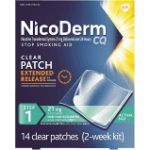The 11 Characteristics of Master Business Blog Post Writers

There are eleven characteristics often considered to be women’s strengths, Nancy D. O’Reilly writes in her book In This Together: How Successful Women Support Each Other in Work and Life.
Interesting… was my reaction to that statement. In a content writer of either gender, I couldn’t help thinking, those very eleven strengths would result in a great business blog marketing effort.
1. Emotional intelligence – the capacity to notice, manage, and express emotions.
Exhibiting emotion in content marketing is a good thing, increasing connection and impact.
2. Empathy – the ability to understand other people’s feelings.
Corporate blog writing needs to aim for copy that proves the writer understands the problems customers have.
3. Compassion – sympathetic consciousness of others’ distress and a desire to alleviate it
A skillful blogger creates a connection of understanding and sympathy with the audience that allows readers to be receptive to the message.
4. Good communication skill – delivering and exchanging information
Bloggers are interpreters, translating clients’ corporate message into people-to-people terms, trying to find exactly the right tone.
5. An ability to build relationships – connecting with others
Consumers want social currency, visible symbols of “insider” status and special understanding that they can show off to others.
6. Multitasking skills – increasing productivity and getting ahead of the competition
Blog content writers spend time “reading around”, writing, illustrating posts with images, and formatting – the combination of skills is what makes for a great end product.
7. A tendency to collaborate – working with others to produce a result
Business blog writing is a product of interaction – among the owner or practitioner and the writer, the webmaster, and even the employees.
8. A desire to mentor – assisting someone less skilled
Reinforcing the familiar, then progressing to new information is an effective tactic for business blogging. Introducing your own specialized knowledge and “how-to” tips, positions you as a mentor to readers.
9. Passion – feeling enthusiasm and excitement
Real enthusiasm means believing in your industry, your company, your product, and your ability to serve your customers, and conveying that in the blog posts.
10. Vulnerability – revealing one’s own weaknesses
True stories about mistakes and struggles are very humanizing, adding to the trust readers place in the people behind the business or practice.
11. Endurance – persisting in the face of challenges
Sustaining the writing effort over months and years takes persistence. By adding a few new items, rearranging some old ones, and staying alert to changing vocabulary and trends, writers can keep the blogs fresh. and new, never running out of things we just can’t wait to say!
O’Reilly’s eleven characteristics, I believe, describe not only women, but blog content writer “greats” of every ilk!





Follow us online!